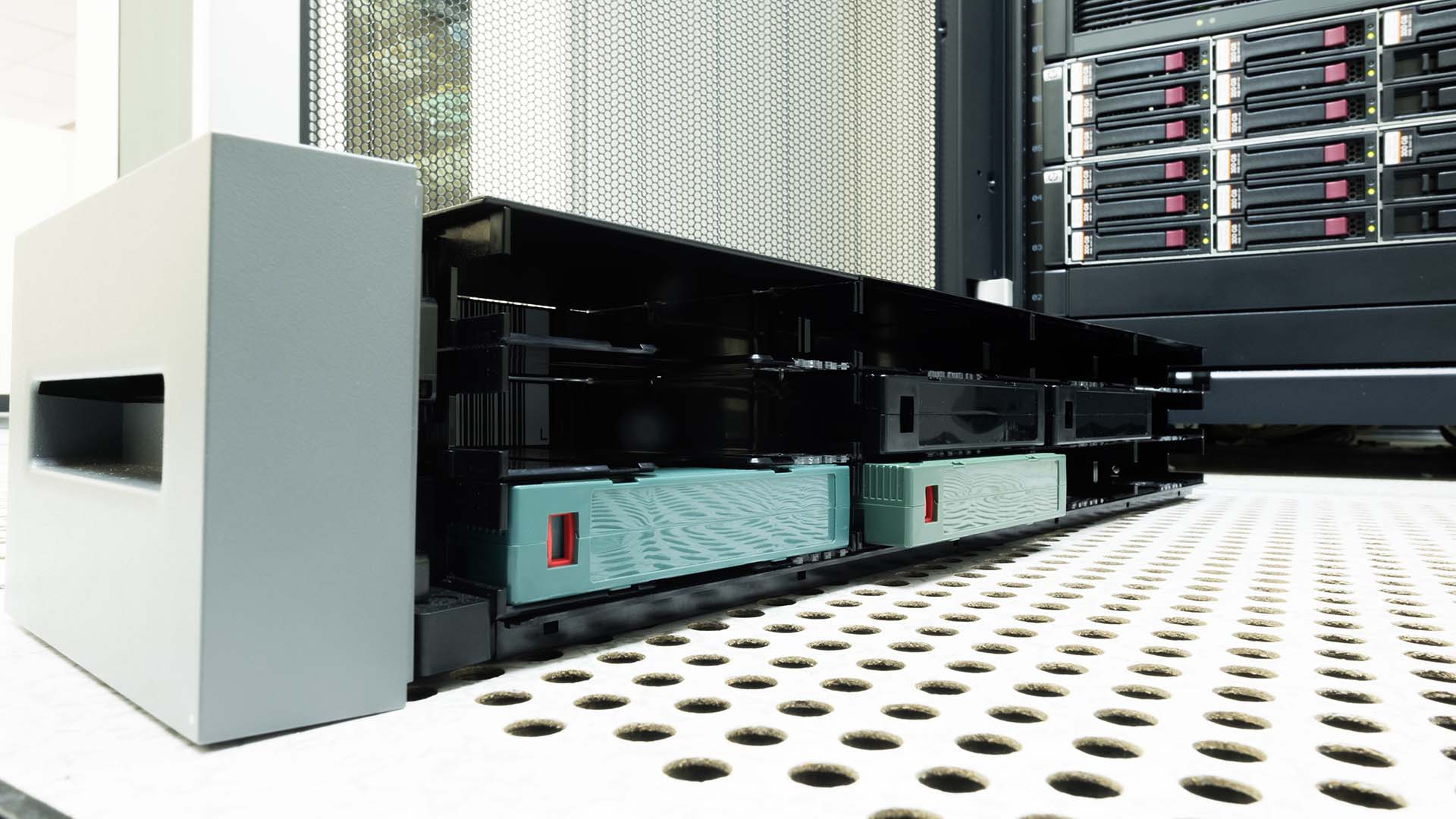
In the final part of our series on archive and backup for professionals, archive specialist Marc M Batschkus discusses the pros and cons of different archive media.
What belongs in the Archive?
The foundation of the archive is the media assets. Production notes, technical documentation etc. can contribute considerably to the value of the archive.
When a restore is needed, a seeing a proxy helps before the hi-res file is restored. Archiware´s P5 Archive offers automatic generation of proxies for the catalog.
Less obvious candidates for the archive are tools, plugins, effect software and everything else contributing to production. These might be very helpful if a production has to be re-created.
When purchasing a new workstation, keeping the “old” one and put it away, including all tools etc., this can save many hours when a production environment needs to be re-created.
Video codecs can limit future access of files. Larry Jordan put together a helpful article how to find affected clips and deal with them (see link).
Test everything and regularly!
Every backup and archive solution is only as good as the working restore process. Testing is the only way to know that the complete chain works as expected.
Archive and Storage
Flash storage cards, SSDs, hard disks, LTO-Tape and optical media, each storage category has their own set of advantages and disadvantages.
While production storage needs maximum speed, archive storage needs durability, large capacity and low cost per TB. Also important is scalability and options for future requirements. Hard disks never were made for sitting on a shelf.
Hard disks have a limited life span and are unfit for long-term archiving.
For long-term storage only optical media and LTO tape are candidates. Durability of optical storage is limited and there are no reliable studies and experiences concerning for long-term archive. Additionally, capacity and throughput are limited.
There is one medium that has been proven to be a reliable long-term storage in industry, finance, science and media creation, LTO tape.
LTO-Tape - the professional medium
LTO was created and entered the market as LTO-1 in 2000. In the compact cartridge data density grew to a remarkable 12TB native with LTO-8 (and 18TB with announced LTO-9).
Multiple security layers provide reliable and durable data storage.:
- Read-after-write
- Error correction
- Auto-speed avoiding stop-and-go or shoe-shining and reducing wear.
- Precision handling of the tape inside the drive
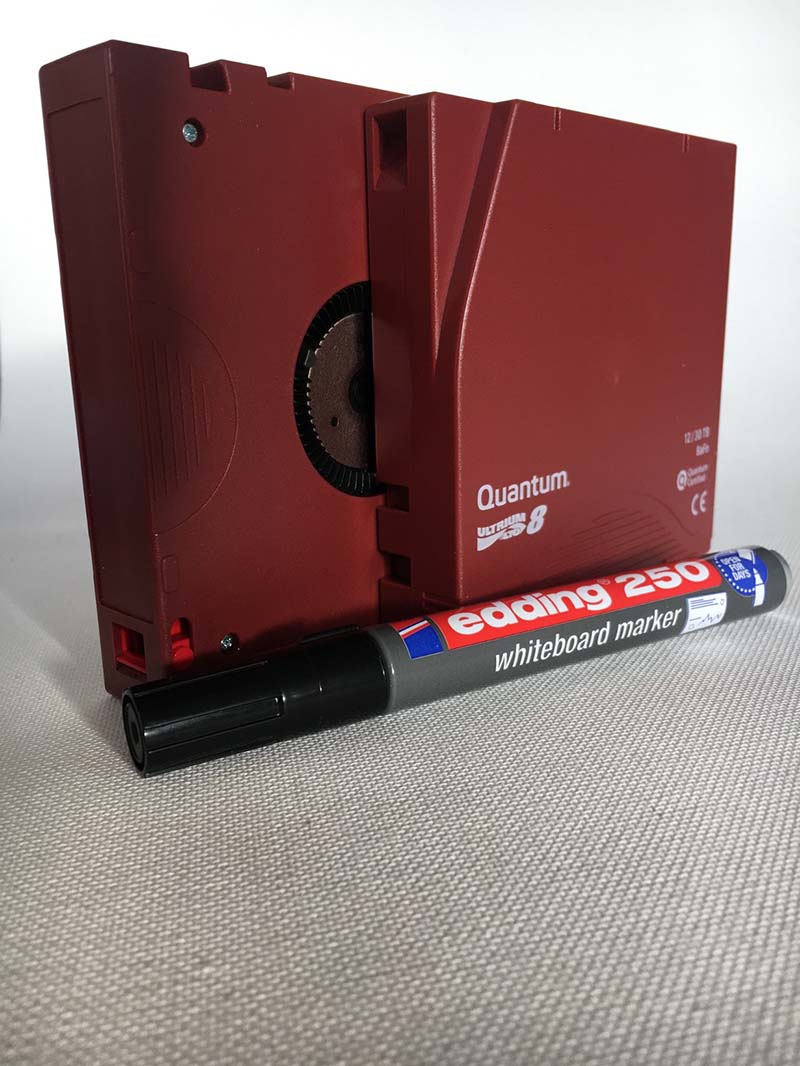
LTO-8 Tapes.
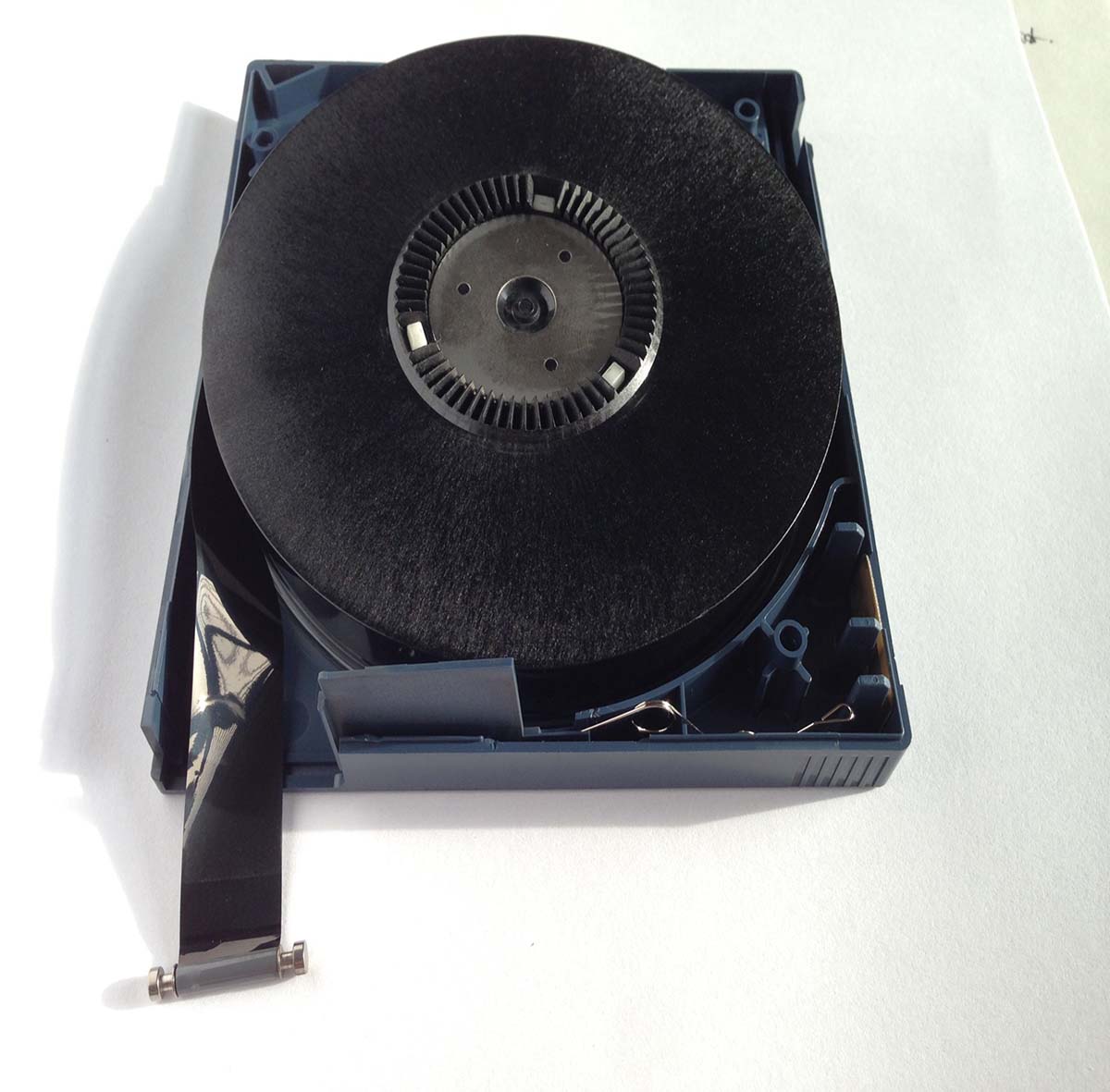
Don´t try this at home. The tape stays inside the cartridge for the user.
Desktop drives with Thunderbolt connection by mLogic, MagStor and OWC transform a PC or Mac into an archive workstation. Expanding the capacity is extremely simple and cost-effective (about 10USD/€ per TB) by just adding new tapes.
LTO-Tape has found its place in the media and entertainment industry due to the durability, long shelf life and low price point.
|
|
LTO-6 |
LTO-7 |
LTO-8 |
LTO-9 (announced) |
|
Capacity (native) |
2,5TB |
6TB |
12TB |
18TB |
|
Read-, Write speed |
160MB/s |
300MB/s |
360MB/s |
400MB/s |
|
Compatible Read/Write |
R 4,5,6 W 5,6 |
R 5,6,7 W 6,7 |
R 7,8 W 7,8 |
R 8,9 W 8,9 |
|
Tape Price/TB ca. |
10€/USD |
10€/USD |
12€/USD |
(tba) |
|
Price single drive |
2000€/USD |
2500€/USD |
3800€/USD |
(tba) |
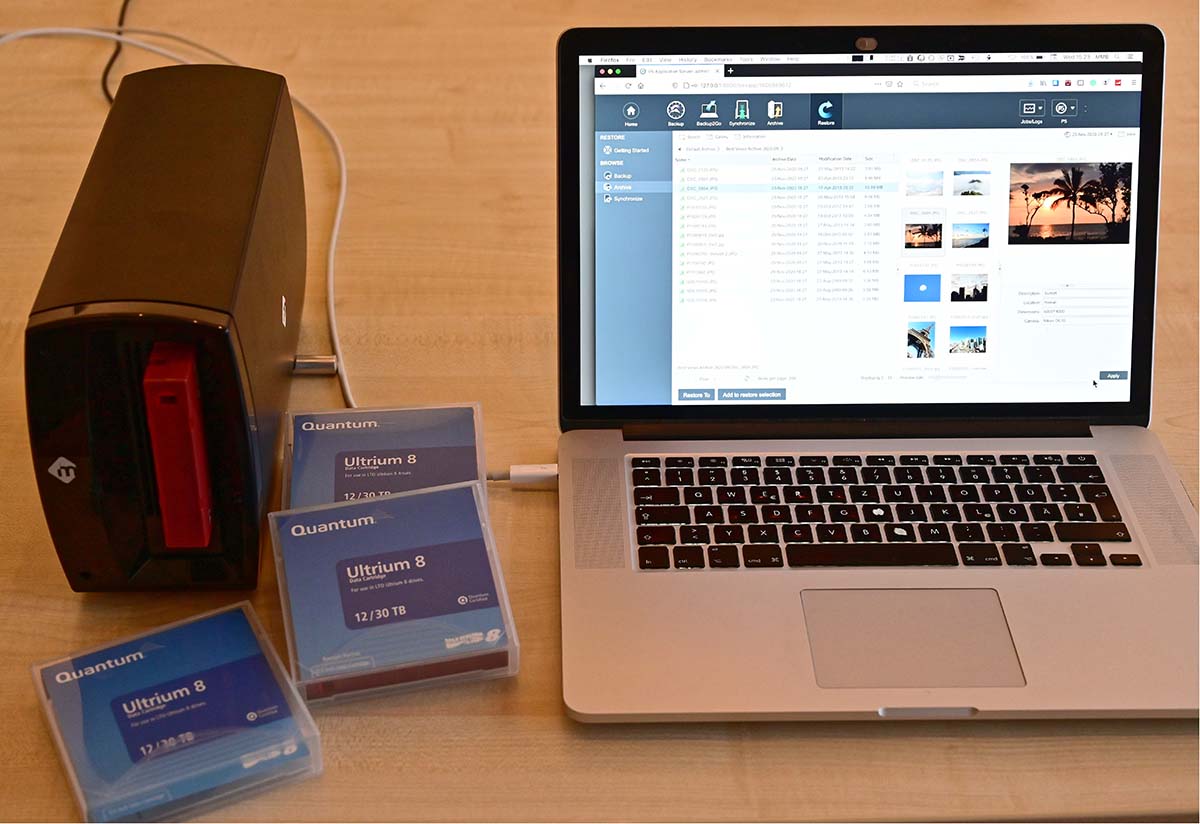
Archive workstation with P5 Archive and LTO desktop drive by mLogic.
Financially a tape archive pays off within a few years. Compared to the constant investment for production storage expansions expanding the tape archive is very affordable.
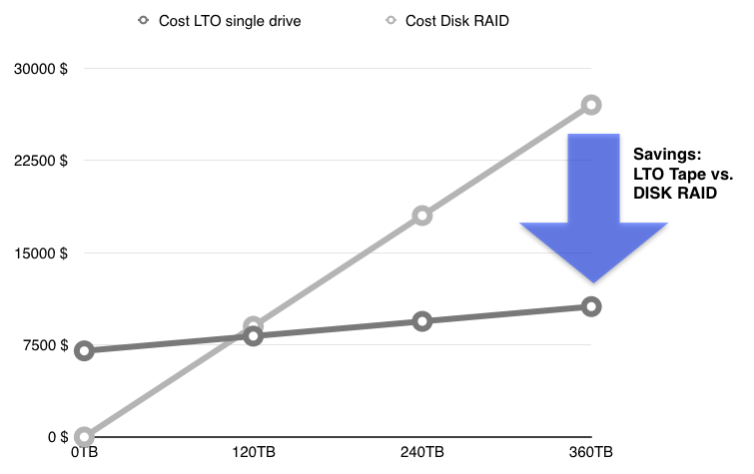
Cost comparison Tape and Disk.
Tape with its „air gap“ offers here bullet proof protection against malware and cyber attacks through the physical separation between the computer/network and the LTO tape.
Offsite storage of media for maximum security
For both, Backup and Archive, offsite storage is of special importance. It is the only way to protect against unforeseeable incidents that affect the studio or office building.
Cloud is also offsite
Cloud services offer an alternative to local storage. Speed of the Internet line and long-term cost should be taken into account and additional fees for access or download. Alternative Cloud services like Backblaze, Wasabi and RSTOR have attractive pricing. For maximum flexibility the Backup and Archive software should offer disk, tape and Cloud support like Archiware P5.
The Backup and Archive is only as good as the restore
To make sure that the whole chain of hardware, network, software, media and associated processes works completely the restore needs frequent testing.
Checklist for professional Longtime-Archive
√ Storage medium with long-term durability
√ Consistently archiving of all finalizes projects and assets
√ Consistently entering or importing of metadata (workflow checklist)
√ Redundant storage media or additional security step
√ Offsite storage for maximum security
√ Archive catalog for browsing and searching
√ Support for migration to future storage media generations
√ Setup covers preset requirements and can scale for future growth
√ Complete documentation of archiving and restore process
√ Backup and Archive run without negatively impacting production
√ Periodic restore test e.g. monthly
Many media assets become more valuable over time or become of historic value. Customers return after years with requests of previous productions. The Archive supports the company in multiple ways, saves production storage, makes finding files easy, protects former projects and reduces the Backup volume.
Links and literature
- LTO Consortium
- Blog with topics around Archive, Backup and Cloning by Archiware
- Tutorial about legacy media and codecs
Alternatives to cloud storage
Archiware P5 is the only solution that covers Archive, Backup and Cloning/replication in one solution; it also runs on QNAP, Synology and NetGear. Free 30-day trial license available.
P5 license for single LTO drive
LTO Desktop Drives
Free eBook: Data Management, Backup & Archive for Media Professionals
Tags: Technology Storage archiving
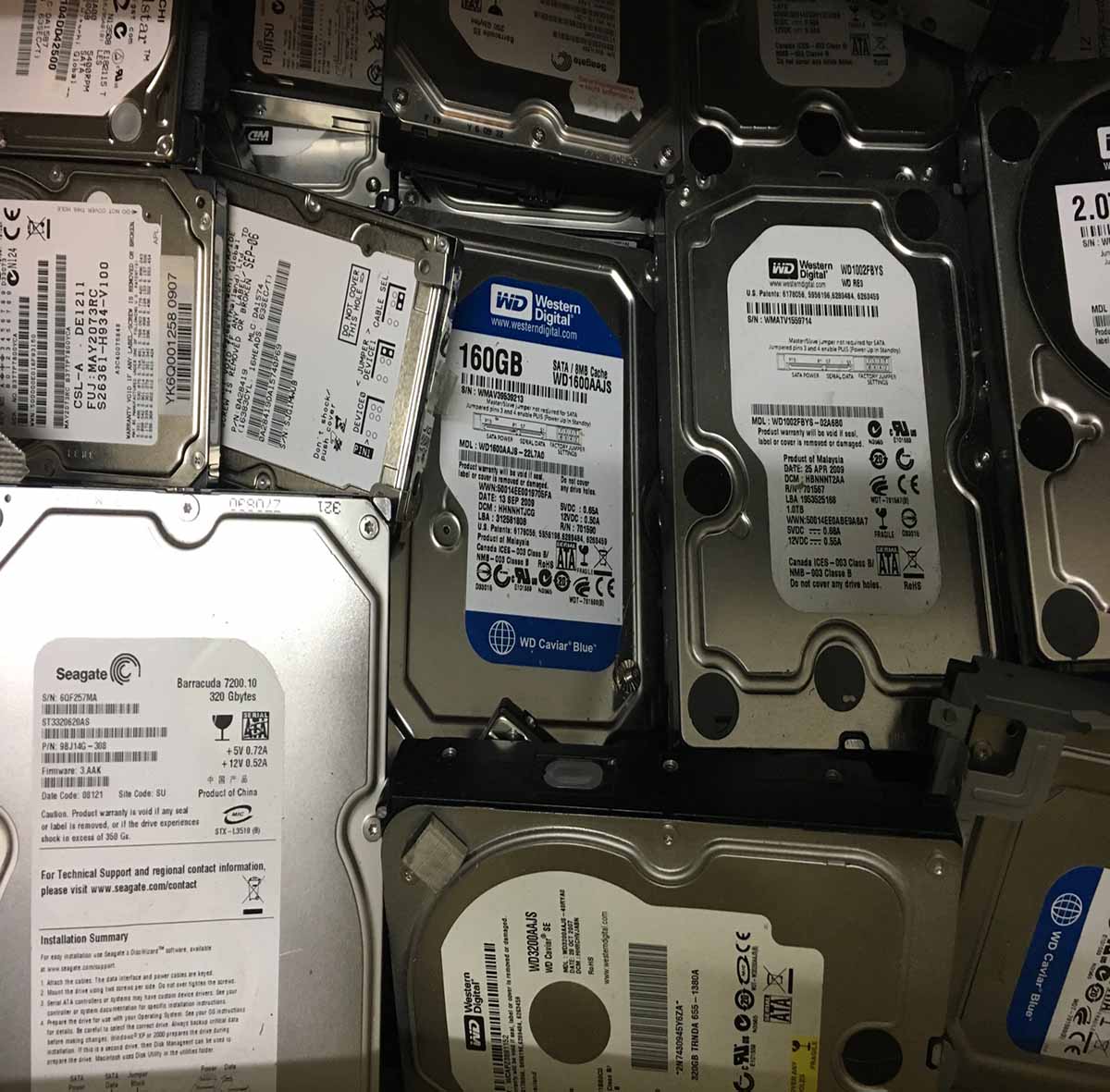

Comments